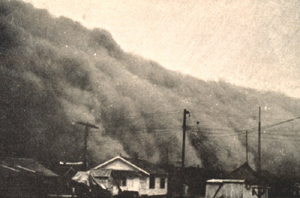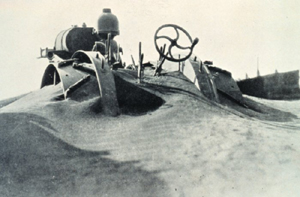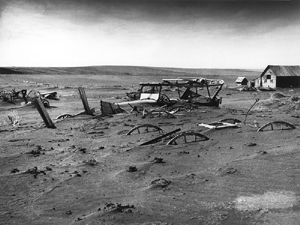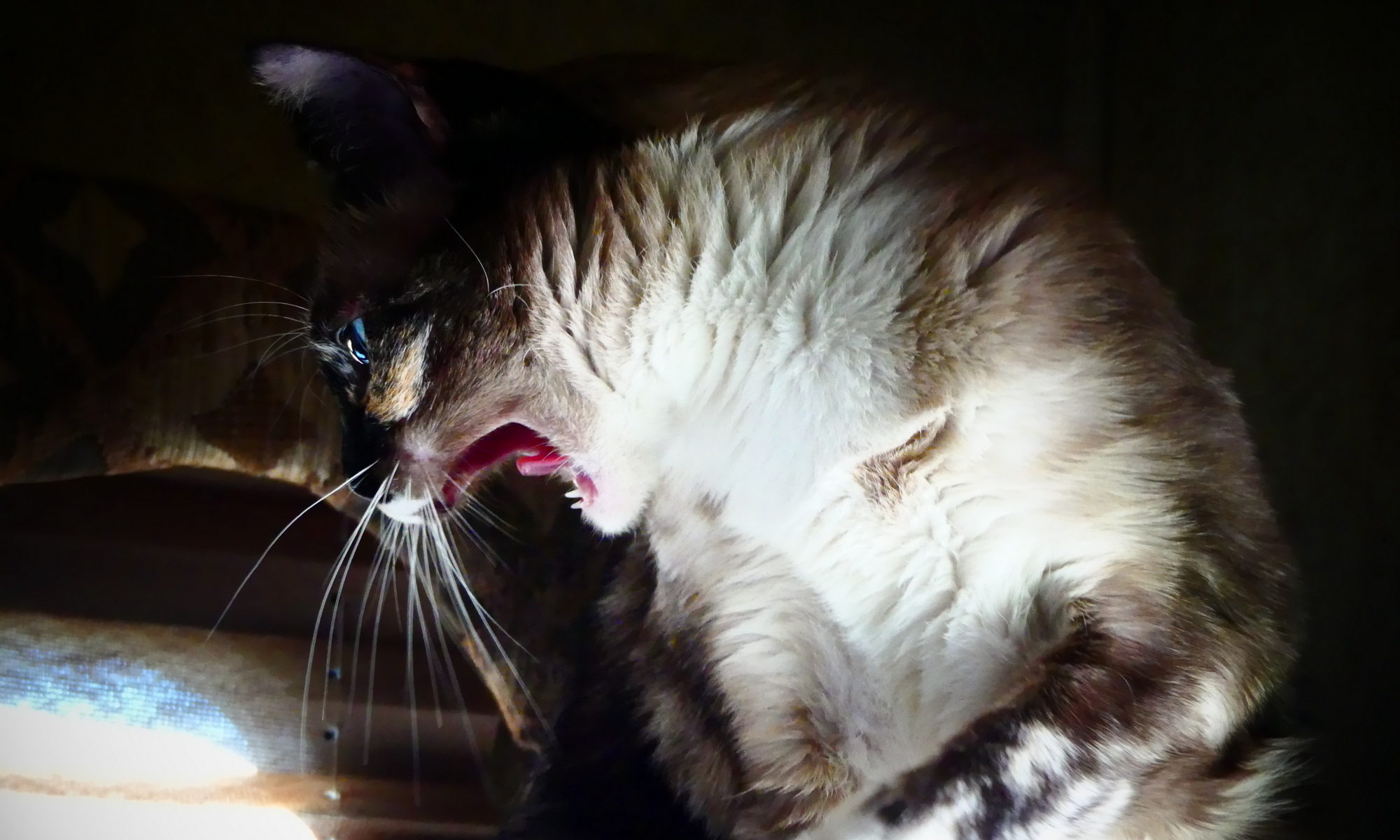Conquest, famine, death
This is a real life horror story which is dying along with those people who lived it. So many things about it are hard to fathom and I don’t just mean the sheer size of the disaster, nor its duration.
Life on the Plains during the Dust Bowl has never been depicted in films. Ask people and they’ll counter with “the grapes of wrath” which showed a family who had moved away from the disaster, to California. A tangential story.
On the Plains, some of those who stayed formed “the last man club” and vowed to wait it out. Die hards led by a bit of a blow hard named McCarty who turned out not to be last to leave.

Eight years of drought, of dust storms of epic proportions, record heat, of futile efforts to seal homes from dust so fine it got everywhere, in people’s food, skin, lungs, of days turned to such darkness you could not see further than a few feet and at worst, not even the hand if front of your face.
Birds flew away until they dropped from exhaustion and were covered up in billowing dust.
People who had survived through the Spanish flu had to wear masks again, this time to keep the dust out, which could not be stopped, slowly suffocating out there in the open.
The plains were becoming a tomb, impossible amounts of dirt lifted hundreds of feet up into the sky and swept across the land, burying everything, killing man and beast alike.
Plagues of locusts and swarms of jack rabbits left nothing behind.

Children dreamed of the rabbits’ screaming as they were culled on Sundays with sticks and rods.
Static electricity generated by the storms was powerful enough to knock men down if they shook hands. People got to wearing gloves, along with the masks. Cars drug chains tied to their rear bumper in order to ground the vehicles. In the spring of 1935, winds blew non-stop for 27 days. Near Amarillo, Texas, a crow’s nest was found, made entirely of pieces of barbed wire, the only material to be found by the bird. Some folks went mad. Some suffocated while others succumbed to dust pneumonia. There were murder-suicides.

Towns put up signs warning those who’d left the Plains to keep moving on as they couldn’t take care of their own.
And yet, whatever lessons there were to learn were not, by and large. The three horsemen of the terrible thirties will ride again.
The above section was written by Lastech. The section below was written by Rudha-an.
Credit for the first two pictures goes to National Oceanic and Atmospheric Administration/Department of Commerce and the collection can be found here by using the search function. http://www.photolib.noaa.gov/index.html
The Worst Hard Time: The Untold Story of Those Who Survived the Great American Dust Bowl by Timothy Egan tells the personal and sometimes painful stories of several people who survived the Dust Bowl. This book puts a very human face on this ecological disaster. It won the 2006 National Book Award for nonfiction.
This book gets 5 claws
Surviving the Dust Bowl is a part of the PBS series “American Experience”. While not a great documentary, it makes a good companion piece to the Timothy Egan’s book above. Several of the people interviewed were featured in the book. Warning, there is footage of the rabbit culling that can be rather disturbing.
This documentary gets 3 beans.
Last, but not least, we leave you with a song by Woody Guthrie. Guthrie grew up in OK, and was living in the Texas panhandle when the storm that gave the Dust Bowl its name occurred. It happened on April 14, 1935 and it was so huge that many people believed it was the end of the world. It was known as Black Sunday. Woody recorded this song for the Library of Congress. The real name of the song is “Dusty Ole Dust”.





Wow. I have to admit I am one of those whose history of the Dust Bowl was relegated solely to The Grapes of Wrath, a book I really enjoyed despite its being a mandatory assignment. I thought that by proxy, everyone pretty much just moved away by hook or by crook. Which a “real man” would do, upon facing impending disaster. In which case it serves to loan more nobility to the Joad family.
Amazingly, 3/4 of the people stayed. They kept up the hope that the rains would come and that things would get better. They were also up to their eyeballs in debt. To read the stories helps a lot to understand the mindset. Moving to the unknown was probably as scary as the dust storms.
As for me, I grew up in the desert and saw dust storms. I never saw anything like the pictures show. I would probably be one of those that went insane. I HATE dust and I’m not even a clean freak. I hate dust and wind. The wind would be bad enough, but the dust would push me over the edge. 🙂
Oh that is so unbearably gruesome what those people went through. It’s just heartbreaking.
Yes, it is. I was taught the history when I was in school. However, it was dry and there wasn’t a true human face put to it. You would think most would leave, but I don’t think they wanted to be “quitters”.
I went to school with a young girl. She was the daughter of Dust Bowl migrants. They followed the crops and bounced between Salinas and Imperial valley. They worked Salinas in the summer and then came to my area to harvest the winter crops. It was a hard life. A lot of settlers in my home area came from the Dust Bowl and started farming there.